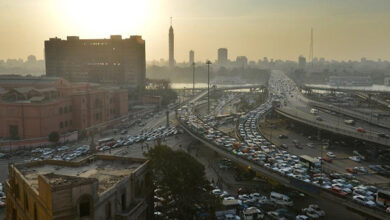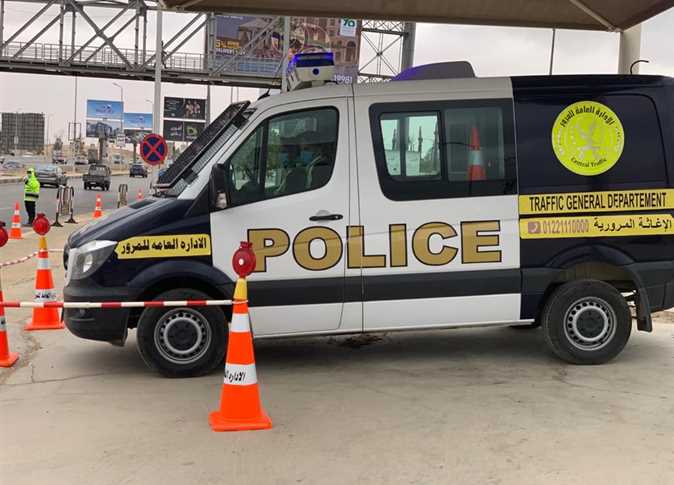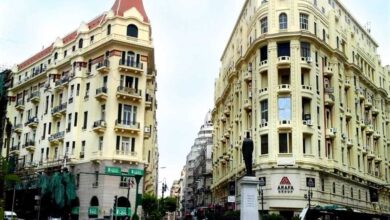Al-Masry Al-Youm continues its conversation with Karim Shafei, Chief Executive Officer of Al Ismaelia for Real Estate Investments, about the consortium’s plan for downtown Cairo’s urban regeneration. In this part of the conversation, we look at the motivation for the consortium’s interest in Downtown and how its plans will affect the neighborhood’s development.
Al-Masry Al-Youm: Let’s take a step back and have you articulate to us why you were interested in the first place in doing this project.
Karim Shafei: A lot of it came by chance but then developed in a non-random way. I learned about Downtown from Nitaq, which was an art festival in early 2001. It was the first time for me to know about Downtown. In my time, Downtown has died as a destination for young people. I am not necessarily interested in art per se, but there was a map: an exhibition in Café Riche, another in Estoril, you stop somewhere and grab a drink.
The experience was fantastic and since then I fell in love with Downtown. The first date I took my wife on was in Arabesque and we walked around Downtown at 11:30 PM. What I figured is that if you buy a building in Downtown today, I am sure it will come back in the same way of Milan, Istanbul and New York. When we came to Downtown to see what buildings to buy, I was offered 40 buildings. Everyone wants to sell to get out.
We thought if we buy 40 or 50 buildings, we could regenerate Downtown without having to wait 50 years, but ten instead. When we did the business model, it turned out it is as profitable as going to suburbia. The idea to revive Downtown and save buildings has to be an economically profitable project and it doesn’t make a difference if it is undertaken by the public or the private sector. It has to be something where you put in money and get profit.
Al-Masry: Why do you think it is important to preserve this colonial-era section of Cairo?
Shafei: It represents a very critical part of modern history. Between 1870 and 1950, we have British colonization, the changes of relations with the Ottoman Empire, the Egyptian constitution was revised twice, the start of political parties, the downfall of the king. It’s a very important piece of history and Downtown is a critical part of it.
Also, why would you not want to preserve any part of history? The architecture is fantastic. The urban planning of Downtown is amazing; it’s the same team that designed Paris for Haussmann.
Al-Masry: So what are you doing to pursue this preservation?
Shafei: We would like to have a proper Downtown like the ones you have everywhere in the world and where there are various functions. This is not like suburban areas where you have strictly residential space or strictly office space or strictly industrial space. Now the stage at which each of those functions will materialize is what the urban plan will tell us.
If you want to attract residents today, you can’t, because there is nothing remotely interesting to get them to come. For residents to live in Downtown, we would like to start to attract first the entertainment: art, restaurants, cafés, theaters. Then it would be the retail. At the same time we have to focus on the hotels because they generate immediate traffic. Then we have to put up some office buildings because Downtown is really the center of Cairo and a lot of businesses that are interfacing with clients would be interested.
Al-Masry: But it seems that all those functions are geared towards the high-income segment, and you said you wanted to attract all segments. Are you trying to bring in the money first?
Shafei: There are two levels. We subsidized activities that we think are essential for Downtown. We are giving all the art activities either a free or subsidized rent. Downtown is a dwelling area for people of all segments. But what happened now is that it became an expelling area, and you lost the affluent and middle market people and only a concentration of the C market people are left. So by creating a space for the A and B doesn’t mean that we want the C out. There is no space for A and B today. You have no services to attract them.
Al-Masry: And do you think it is challenging to attract A and B markets who are going more and more towards satellite cities?
Shafei: I think what’s attractive about Downtown Cairo is what’s interesting in downtowns all around the world. It is where the action is happening, where the art is concentrated, where politicians and political groups are concentrated and where all the businesses are concentrated. The move towards suburbia, as far as I am concerned, is about less traffic, which is something I would like to have solved in Downtown. You won’t have a building with 2000 people working. You will have a marketing agency or a law office or an architecture office or a small headquarters for a bigger company.
Al-Masry: Who are your clients thus far?
Shafei: We already have two law firms, an accounting firm, a couple of foreign aid agencies and embassies. We are not actively trying to sell the spaces yet. So far, it’s people who are coming to us because they heard about the project and they want to relocate Downtown.
Al-Masry: Do you have a target age range?
Shafei: This is what the urban plan will tell us because it covers the marketing segment. But typically, those who move to Downtown are young, rising entrepreneurs or couples in their 50s whose kids have grown and need to move to a place where things are more accessible. But then again, in the past ten years, families are coming back into the city.
Al-Masry: What is going to be your role once the refurbishing is done and the selling is over?
Shafei: We don’t have the capacity, the leverage or the resources to become a replacement for any government agency. What we will own of Downtown would not exceed seven or eight percent of the whole space of Downtown, and Downtown is small. There are several debates within the board and we are waiting for the business plan and some more modeling of our figures and our businessmen to see if we are going to sell small percentages or large percentages, and if we are, we are going to sell just units or entire buildings.
There is a very important thing, which is to maintain solid ownership of an entire building. If we start selling units, this would be a disaster because we haven’t had a tenants’ union or an owners’ union that is effective. The best thing is to maintain the ownership in one entity to preserve the building. So we might sell entire buildings, but to sell individual apartments is something that we still haven’t decided.
Al-Masry: Does your planning envisage any interface with people or attempt to engage them in the process of urban regeneration that you are pursuing?
Shafei: There are two levels. One is a strictly private Ismaelia Consortium level, and the other is more general. Without disclosing any names, we signed a contract with urban development experts and local architects who implemented similar projects and went on the ground to work with people on how to redo the areas where they are.
The other thing we have been discussing with several players in Downtown is the establishment of an association that cares for Downtown in terms of urban preservation, policy changes, social preservation, revival, and traffic. That will encourage investors to come Downtown. At the end of the day, Ismaelia owns seven or eight percent of Downtown. Fifty percent is owned by the government. There is still 40 percent that can be invested privately. It would help me a lot if other people were interested in investing in Downtown.
Al-Masry: What have been your challenges thus far?
Shafei: None of the challenges came as a surprise. I thought the criticism from the media was too early, since we haven’t done anything yet. The attacks were also very superficial. I would have thought the criticism would come around the questions you asked, like “is it going to be a seven-star destination?” and “what are you going to do with the people?” and not that “we are supported by Zionists” and that “we will tear down the buildings and establish skyscrapers.”
This media made people react very defensively when I thought the tenants would be more receptive. Today, the minute we take the building, we have 20 people going to police stations making complaints against us. A lot of them do it to put pressure on us to pay more money for their lease contracts. We also have inherited over 120 cases by the tenants because you buy the building alongside the cases. Owners start a case to put pressure on the tenants and the cases make no sense. We dropped 60 of them.




